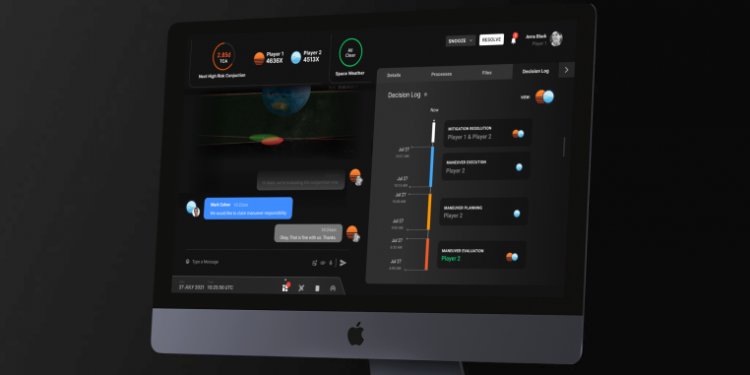Slingshot Aerospace raises $25M to help satellite operators navigate space traffic
It’s getting a little crowded in low Earth orbit. Between the proliferation of small-scale satellites, massive constellations à la SpaceX’s Starlink, and an ever-growing collection of space junk, launching and operating an orbiting body can feel a bit like playing Frogger. Even the International Space Station has to perform “avoidance maneuvers” on a regular basis. […]

It’s getting a little crowded in low Earth orbit. Between the proliferation of small-scale satellites, massive constellations à la SpaceX’s Starlink, and an ever-growing collection of space junk, launching and operating an orbiting body can feel a bit like playing Frogger. Even the International Space Station has to perform “avoidance maneuvers” on a regular basis.
Now, there’s still a lot of space in space — but when you’re operating a billion-dollar satellite, you’re going to want to do everything in your power to keep it collision-free.
That’s where Slingshot Aerospace steps in. The company synthesizes data from multiple sources to provide what it describes as a real-time digital landscape of space, allowing space operators to better manage and protect their assets. Founded by Melanie Stricklan, David Godwin, and Thomas Ashman in 2017 and based in Austin and El Segundo, it’s raised $34.6 million over a two-part Series A round, the second chunk of which — worth $25 million — was announced today. (The previous $8M was in October of 2020.)
“The opportunities are endless in space but we must unlock a digital revolution to optimize spaceflight operations and orbital asset management,” Stricklan said in the company’s press release. “Real-time coordination is necessary to provide more accessible, timely, and accurate risk mitigation across all space-faring organizations.”
The second round was led by Draper Associates and ATX Venture Partners, with additional contributions by Edison Partners, Embedded Ventures, Valor Equity Partners, and Lockheed Martin Ventures, among others. Slingshot Aerospace’s customers include NASA, Boeing, Lockheed Martin, the U.S. Space Force, the U.S. Air Force, and OneWeb.
“Space situational awareness is ripe for disruption. No common platform exists for satellite operators to communicate and collaborate in real time with actionable information to resolve on-orbit conjunctions and optimize global space awareness,” said Daniel Herscovici of Edison Partners.
Slingshot Beacon is an orbital collision avoidance program that “connects commercial, government and civil customers on one platform to better design, manage, and safeguard their satellites and other assets; mitigate risks; and ensure safe and reliable operations for all spaceflight operators.” Its pilot program launched in August 2021 with participants whose assets comprise more than half of the satellite constellations currently in low-Earth orbit.
The company’s new funds will go towards commercializing products like Slingshot Beacon, as well as hiring 40 new employees over the next year. With some 115,000 satellites expected to launch by 2030, it seems like that’s a pretty good — and pretty necessary — idea.







